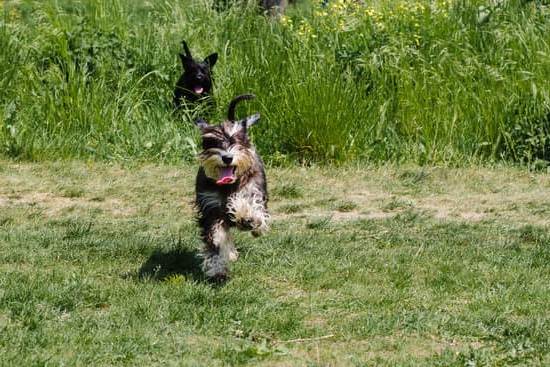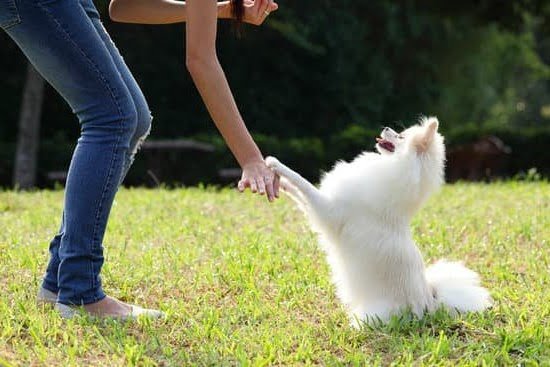Is your dog reluctant to go for walks and refuses to walk on a leash? In this article, we will discuss how to leash train a dog that won’t walk. Many pet owners struggle with this issue, but understanding the reasons behind it is the first step in addressing the problem effectively.
There are various factors that can contribute to a dog’s refusal to walk on a leash. It could be due to fear, anxiety, or simply discomfort with the leash and harness. In some cases, a previous negative experience may have created a aversion to walking on a leash. No matter the reason, it is important for pet owners to approach the issue with patience and understanding.
Proper leash and harness selection are crucial when trying to train a dog that won’t walk. The right equipment can make all the difference in helping your pet feel comfortable and secure. Additionally, creating positive associations with the leash and walking can significantly improve your dog’s willingness to walk on a leash. By using treats and positive reinforcement, you can encourage your furry friend to overcome their reluctance and enjoy going for walks.
Proper Leash and Harness Selection for Dogs That Won’t Walk
Understanding the reasons why a dog refuses to walk on a leash is crucial in addressing this issue. Some dogs may have had negative experiences with leashes in the past, while others may feel anxious or scared when wearing a harness.
It’s important to assess your dog’s behavior and body language to determine the root cause of their refusal to walk on a leash. Once you understand the underlying reason, you can take steps to address it and make the walking experience more comfortable for your furry friend.
Proper leash and harness selection for dogs that won’t walk is essential in ensuring their comfort and safety. When choosing a leash, opt for one that is lightweight and durable, with a comfortable handle for you to hold.
For dogs who resist walking on a leash, selecting a harness instead of a collar can alleviate pressure from their neck and reduce any discomfort they may feel. Make sure to measure your dog’s chest girth accurately to select the right size harness for them.
It’s also important to consider the material of the leash and harness. Some dogs may be sensitive to certain fabrics or materials, so choosing options that are soft and gentle on their skin can make a significant difference in their willingness to walk. Taking these factors into account when selecting a leash and harness can help create a more positive experience for your dog, making them more receptive to leash training efforts.
| Leash/Harness Selection Criteria | Description |
|---|---|
| Comfort | Selecting lightweight, soft materials for both leash and harness |
| Proper Fit | Accurately measuring your dog’s chest girth when choosing a harness |
| Durability | Choosing a strong, durable leash that can withstand pulling without causing discomfort |
Tips for Creating a Positive Association With the Leash and Walking
Creating a positive association with the leash and walking is crucial when dealing with a dog that won’t walk on a leash. By implementing the right techniques, pet owners can help their furry companions overcome their reluctance and fear, ultimately making walks an enjoyable experience for both parties.
Start Indoors
One effective way to create a positive association with the leash is to start indoors. Allow the dog to sniff and play with the leash while providing treats and praise. This will help them associate the sight and presence of the leash with positive experiences, gradually reducing any anxiety or fear they may have towards it.
Short Leash Sessions
Another tip is to keep initial leash training sessions short and sweet. For dogs that won’t walk, forcing them into prolonged walks can exacerbate their resistance. Instead, opt for brief sessions where the dog wears the leash for short periods around the house or yard. Once they become comfortable in this setting, gradually build up to longer walks outdoors.
Positive Reinforcement
Using positive reinforcement techniques such as treats and praise can work wonders in creating a positive association with walking on a leash. Whenever the dog shows willingness to approach or interact with the leash, offer rewards to reinforce this behavior. Over time, they will begin to view the leash as a source of good things, making them more receptive to walking on it.
By following these tips for creating a positive association with the leash and walking, pet owners can effectively address their dog’s reluctance to walk on a leash while strengthening their bond through positive experiences.
Gradual Introduction to Leash Training for Reluctant Dogs
When it comes to leash training a dog that won’t walk, it’s important to take a gradual approach to introducing the leash. For some dogs, the sight of a leash can trigger anxiety or fear, which can make them resistant to the idea of being tethered to it. By taking your time and slowly acclimating your dog to the leash, you can help build their confidence and trust in this new experience.
Getting Your Dog Comfortable With the Leash
Start by simply allowing your dog to sniff and examine the leash while it’s on the ground. This will help them become familiar with its presence and scent without feeling pressured to wear it immediately. You can also try incorporating the leash into playtime or mealtime, so that your dog begins associating it with positive experiences.
Once your dog seems at ease with the leash, you can gently introduce the concept of wearing it. Begin by attaching the leash to their collar or harness for brief periods of time while they’re indoors. Offer plenty of praise and rewards during these sessions to help create a positive association with wearing the leash.
Gradual Exposure to Walking on a Leash
After your dog has become comfortable wearing the leash indoors, you can start working on getting them used to walking with it. Start by practicing in a quiet, familiar environment where there are minimal distractions. Keep the initial walks short and low-pressure, allowing your dog to set the pace and providing plenty of encouragement along the way.
By taking this gradual approach, you can help ease your reluctant dog into becoming more comfortable with walking on a leash. Remember to be patient and always keep training sessions positive and rewarding for your furry companion. With time and consistency, even the most hesitant dogs can learn to enjoy going for walks on a leash.
Using Treats and Positive Reinforcement to Encourage Walking on a Leash
Understanding the reasons why a dog refuses to walk on a leash can often be the first step in finding a solution. Some dogs may have had negative experiences with leashes or walks in the past, while others may feel anxious or fearful when taken outside. It’s important to consider these possibilities and approach training with patience and understanding.
Once you’ve addressed any underlying issues, selecting the proper leash and harness for your dog is crucial. For dogs that won’t walk, choosing a comfortable harness that doesn’t put pressure on their neck can make a significant difference. There are various types of harnesses available, such as front-clip, back-clip, and no-pull options, so it may take some trial and error to find the best fit for your dog.
When it comes to using treats and positive reinforcement to encourage walking on a leash, consistency is key. It’s essential to use high-value treats that your dog really enjoys and to reward them consistently for taking steps while on the lead. Over time, you can gradually reduce the frequency of treat rewards as your dog becomes more comfortable with walking on a leash.
| Leash Training Tip | Details |
|---|---|
| Reasons for reluctance | Dogs may have had negative experiences or feel anxious. |
| Proper harness selection | Choose a comfortable harness that doesn’t put pressure on the neck. |
| Treats and positive reinforcement | Use high-value treats and reward consistently for progress. |
Dealing With Leash Pulling and Other Unwanted Behaviors During Walks
Leash pulling and other unwanted behaviors during walks can be frustrating for dog owners, but it’s important to understand why these behaviors occur. Dogs may pull on the leash due to excitement, lack of leash training, or a desire to explore their surroundings. In some cases, it could also be a sign of anxiety or discomfort. Understanding the underlying cause is crucial in addressing these behaviors effectively.
To address leash pulling and other unwanted behaviors, proper equipment is essential. Choosing the right leash and harness can make a significant difference in managing these issues. A front-clip harness can help discourage pulling by redirecting your dog’s attention back towards you. Additionally, using a shorter leash can give you better control and prevent your dog from wandering off or pulling excessively.
Another effective strategy for dealing with unwanted behaviors during walks is to practice positive reinforcement techniques. When your dog behaves well on the leash, offer treats, praise, or rewards to reinforce positive behavior. This creates a positive association with walking on the leash and encourages good behavior during walks.
Consistency is key in addressing leash pulling and other unwanted behaviors. It’s important to set clear boundaries and stick to them during walks. If your dog starts to pull or exhibit any unwanted behavior, stop walking and wait for them to calm down before continuing. With patience and consistent training, you can help your dog develop better walking habits over time.
- Understand the reasons behind leash pulling
- Select proper equipment such as front-clip harness
- Use positive reinforcement techniques
- Be consistent in setting boundaries during walks
Consistency and Patience
Leash training a stubborn dog can be a challenge, but with consistency and patience, it is possible to help your furry friend become comfortable with walking on a leash. Here are some important factors to keep in mind when dealing with a dog that won’t walk on a leash:
- Consistent Training: One of the key factors in leash training a stubborn dog is consistency. This means establishing a routine for walks and sticking to it. Dogs thrive on routine and structure, so consistent training will help them understand what is expected of them during walks.
- Patience: Patience is crucial when working with a dog that refuses to walk on a leash. It’s important to remember that every dog learns at their own pace, and forcing them to do something they’re uncomfortable with will only make matters worse. Take your time and be patient as you work on building positive associations with the leash and walking.
- Positive Reinforcement: Using positive reinforcement, such as treats or praise, can go a long way in encouraging a reluctant dog to walk on a leash. When they take even small steps forward, be sure to reward them for their progress. This will help them associate walking on the leash with positive experiences.
By being consistent, patient, and using positive reinforcement techniques, you can help your stubborn dog become more comfortable with walking on a leash over time. Remember that every dog is different, so it’s important to adjust your training methods based on your pet’s individual needs and personality.
Seeking Professional Help and Training Resources for Dogs Who Still Won’t Walk on a Leash
In conclusion, leash training a dog that won’t walk can be a challenging task, but with patience and the right approach, it is possible to overcome this issue. It’s important to understand the reasons behind the dog’s refusal to walk on a leash, as well as to select the proper leash and harness that will make the experience more comfortable for them.
Creating a positive association with the leash and walking is crucial, and gradual introduction to leash training can help build their confidence. Using treats and positive reinforcement can also encourage reluctant dogs to walk on a leash, while addressing unwanted behaviors such as leash pulling is essential for a successful training process.
Consistency and patience are key factors in leash training a stubborn dog, and seeking professional help and training resources may be necessary for dogs who still won’t walk on a leash despite your best efforts. With the right guidance and support, even the most reluctant dogs can eventually learn to enjoy walks on a leash. Remember that every dog is unique, so it’s important to tailor your approach to their individual needs and personality.
Frequently Asked Questions
How Do You Get a Dog That Won’t Walk to Walk?
Getting a dog that won’t walk to walk can be a challenging task, but patience is key. Start by getting the dog comfortable with the leash and collar first, then slowly introduce short walks in familiar surroundings.
Offer treats and praise to encourage the dog to move and continue reinforcing positive behavior. It’s important to stay calm and provide reassurance to help build the dog’s confidence.
How Do You Train a Scared Dog to Walk on a Leash?
Training a scared dog to walk on a leash requires sensitivity and understanding of the dog’s fears. Begin by allowing the dog to get used to the leash and harness in a safe environment indoors, then gradually transition to walking outside in quiet areas.
Use positive reinforcement, such as treats and verbal praise, to encourage progress and create positive associations with walking on a leash. Consistency, patience, and gentle guidance are essential in helping a scared dog gain confidence during leash training.
What Is the Fastest Way to Leash Train a Dog?
The fastest way to leash train a dog is through consistent, positive reinforcement and patience. Start by teaching the dog to associate the sight of the leash with positive experiences, such as treats or playtime. Gradually introduce the concept of walking on a leash indoors before moving training sessions outdoors.
Maintain a calm and confident demeanor while walking the dog, redirecting any unwanted behavior with gentle guidance rather than punishment. It’s crucial to be patient and understanding throughout the process of leash training in order to achieve long-term success with your dog.

Welcome to the blog! I am a professional dog trainer and have been working with dogs for many years. In this blog, I will be discussing various topics related to dog training, including tips, tricks, and advice. I hope you find this information helpful and informative. Thanks for reading!





